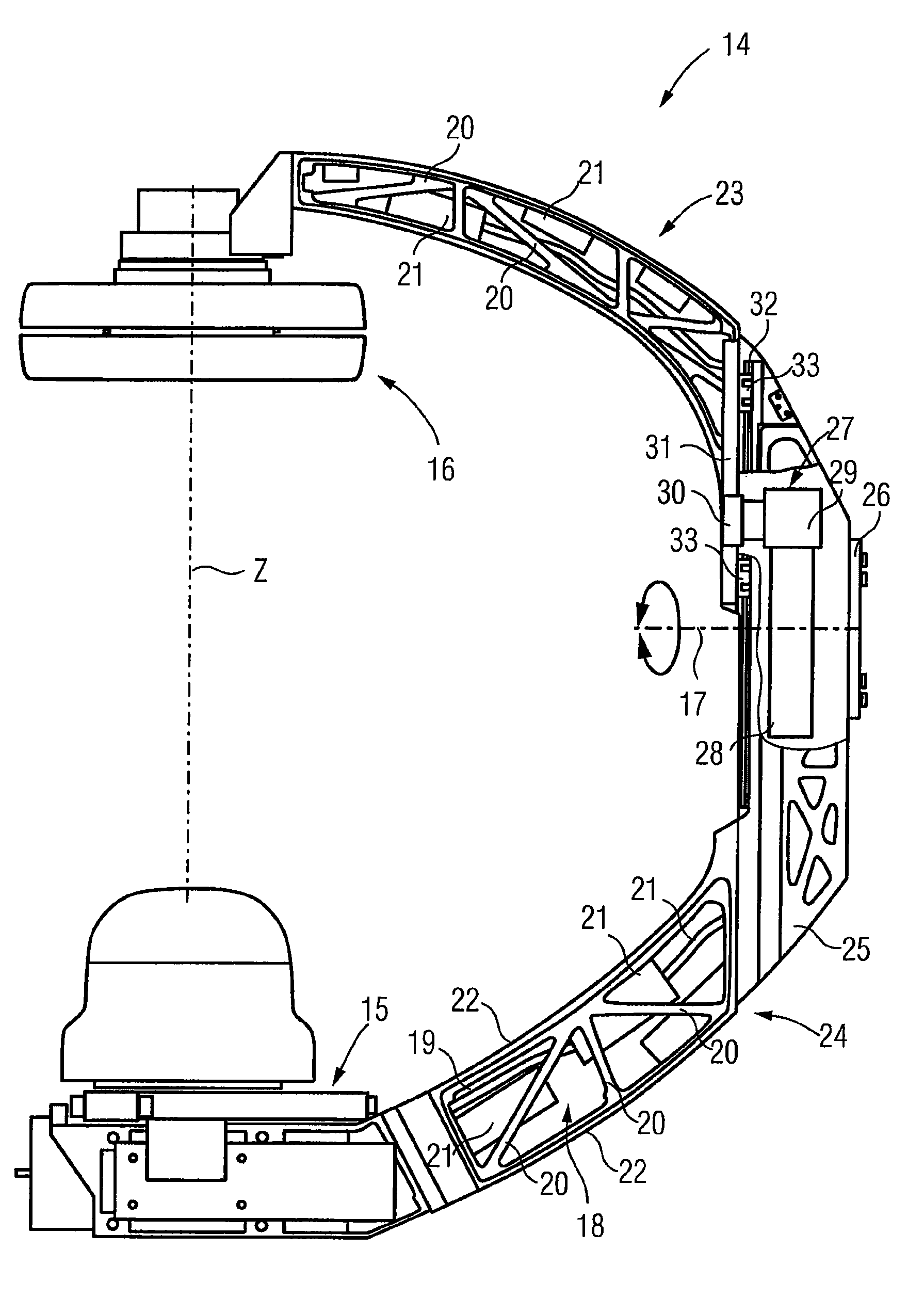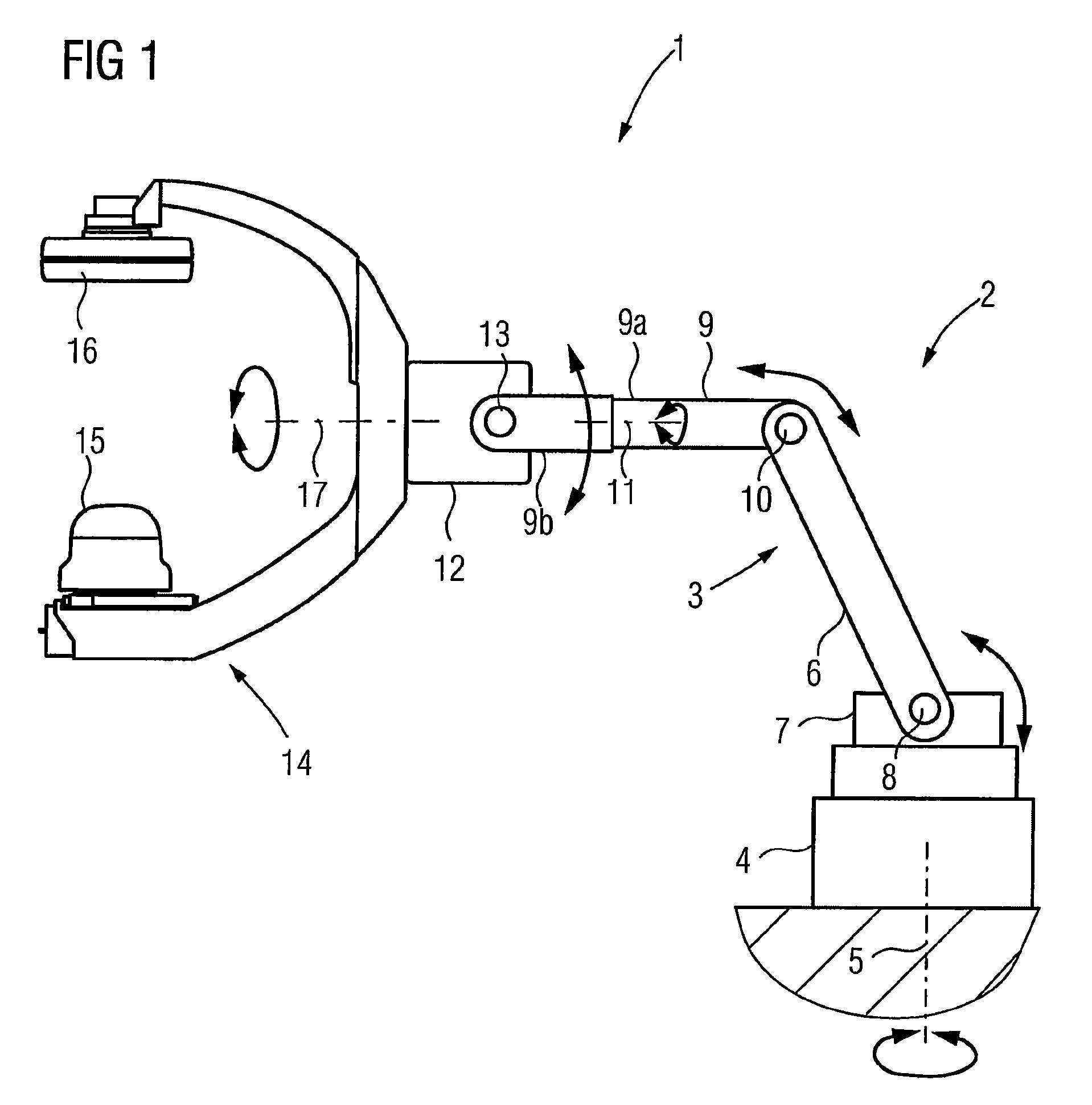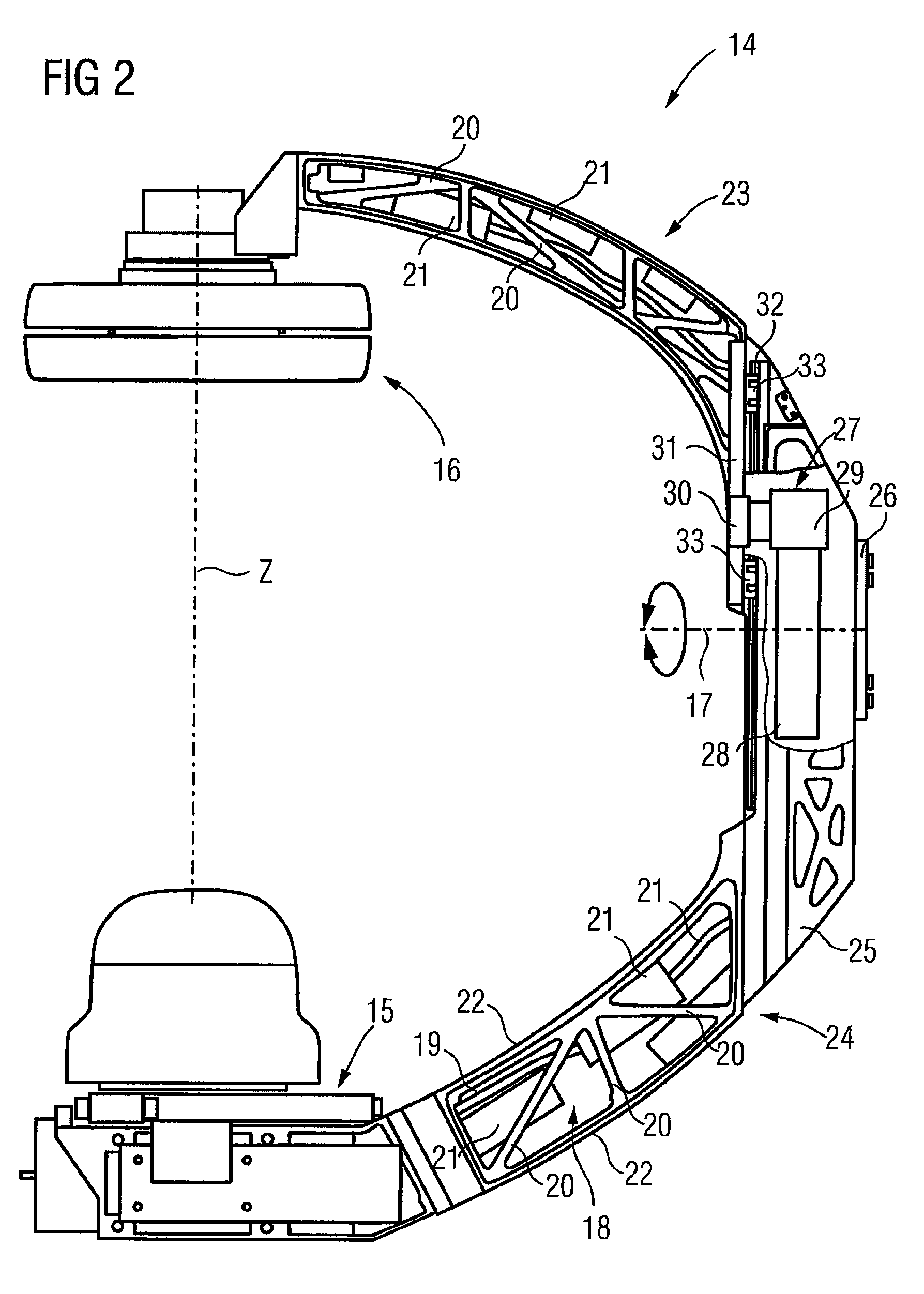C-arm mounted on a robotic arm
a robotic arm and c-arm technology, applied in the field of xray devices, can solve problems such as correspondingly complex constructions, and achieve the effects of simple assembly and accessibility, convenient manufacturing, and convenient operation
- Summary
- Abstract
- Description
- Claims
- Application Information
AI Technical Summary
Benefits of technology
Problems solved by technology
Method used
Image
Examples
Embodiment Construction
[0022]FIG. 1 shows an x-ray device 1 including an industrial robot 2, with a robotic arm 3, which is accommodated on a base 4, arranged on the floor. The robotic arm 3 is rotatable overall on the base about a vertical axis 5. The robotic arm 3 is accommodated on the base 4 by a first robotic arm 6 on a base part 7. The first robotic arm 6 can be rotated about the vertical axis, on which base part 7 it can also be pivoted about a horizontal axis 8. A second robotic arm 9 is positioned on the first robotic arm 6. The robotic arm 9 may be pivotable thereupon about a second horizontal axis 10. The second robotic arm 9 includes the first arm section 9a, which is arranged on the first robotic arm 6, as well as a second arm section 9b, which for its part can be rotated about a further axis 11 relative to the arm section 9a. A C-arm mount 12, which can be rotated about the axis 13, may be positioned on the arm section 9b. The C-arm 14, upon which a radiation source 15 and a radiation detect...
PUM
 Login to View More
Login to View More Abstract
Description
Claims
Application Information
 Login to View More
Login to View More - R&D
- Intellectual Property
- Life Sciences
- Materials
- Tech Scout
- Unparalleled Data Quality
- Higher Quality Content
- 60% Fewer Hallucinations
Browse by: Latest US Patents, China's latest patents, Technical Efficacy Thesaurus, Application Domain, Technology Topic, Popular Technical Reports.
© 2025 PatSnap. All rights reserved.Legal|Privacy policy|Modern Slavery Act Transparency Statement|Sitemap|About US| Contact US: help@patsnap.com



